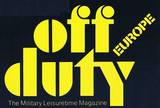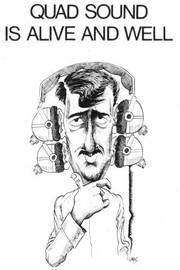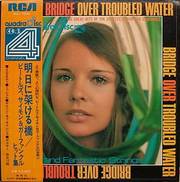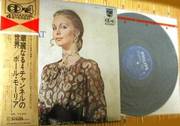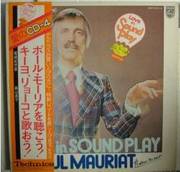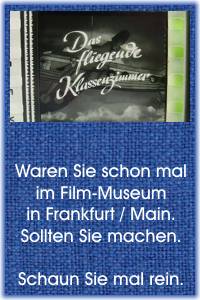"off duty" 1970 - 1997 - eine Freizeit-Zeitung für's US-Militär
Die in diesem amerikanischen (Freizeit-) Shopping-Magazin angepriesenen Hifi- und Video-Produkte waren auschließlich amerikanischen und kanadischen Militärangehörigen zugänglich - also zu kaufen - und vor allem zu ganz ungewöhnlich (verblüffend) niedrigen US $ Military-Preisen. Zu der einführenden "off duty" Seite geht es hier lang. - Um 1970 begann der weltweite Hifi-Boom bis zum 1. Crash 1978 und dann wieder zum 2.Crash um 1990. Über die 20 Jahre nach 2001 lesen Sie mehr in den Kolumnen auf diesen japanischen Seiten.
.
Die Special Record Section - December 1975 - Teil 4
.
Off Duty / Europe / December 1975
1975 at Its Best - Ein Leben im Schallplatten-Himmel
.
QUAD SOUND IS ALIVE AND WELL
IF YOU ALREADY OWN a 4-channel system, or if you are considering buying one, you'll be happy to know that the selection of quadraphonic discs and tapes has doubled in the past year.
And, this rapid growth occurred during a period when a few skeptics were proclaiming the "death" of 4-channel!
What can you expect to find in the quadraphonic format when you visit a record shop? Well, in recent months number 52 of Billboard Magazine's trade Number list of the nation's top 200 album and tape best sellers were offered in quad.
Furthermore, the percentage of quad albums is higher at the top of the charts. In mid-'74, only a dozen of the Billboard top 100 were available in 4-channel form; this year finds six of the top 10, 11 of the top 25 and 27 of the top 100 in quad.
Fast alle Quadro-Platten kommen aus Japan
Quadraphonic recordings aren't the exclusive domain of American manufactures either. Far from it. As of late this year there were nearly 700 CD-4 records available in Japan, for example. And, of course, there are many other titles available there in other quad formats.
How do the various 4-channel formats fare? Well, of the 52 titles in the top 200, 23 are in CD-4, 13 in SQ and 2 in OS. All told, a recent issue of the Schwann catalog contained 750 quad listings, 300 of them classical performances.
While most people are probably interested primarily in quadraphonic discs, 4-channel tape is making news as well.
Since the start, virtually all open-reel quad tapes have been discrete, with four separate tracks. The 8-track cartridge, too, is available in the discrete 4-channel format. But, this leaves the cassette. After a long delay, BASF has introduced six prerecorded SQ cassettes.
Angeblich senden 300 US Sender brereits Quadro Musiken
You don't have to own records or tapes to enjoy 4-channel sound, either. Sansui claims that 300 Stateside stations are broadcasting in QS matrix quad already.
CBS has five stations lined up for quad in New York alone, with plenty of others elsewhere. Meanwhile the Federal Communications Commision, watchdog of the airwaves, is busy studying various quadraphonic broadcasting schemes with an eye to selecting the best system for national use.
Admittedly, even with the large number of quad selections available, 4-channel still accounts for a small share of the market. But, it is a growing share of the market. And, with the smoke clearing from the battle of the 4-channel recording systems, it is likely that quad will soon have the record market "surrounded."
FOUR-CHANNEL FUDDLEMENT ? (Quadro Verwirrung ?)
IF YOU are confused about the various 4-channel systems available, don't worry, you aren't alone. The 4-channel music scene has been a frantic one in recent years, with various quadraphonic systems fighting it out. Now things have settled down, with three main systems still going strong.
There are two distinct approaches to quadraphonics, discrete and matrix. With the discrete approach four distinct channels of audio information are carried in the record grooves (CD-4) or on four tape tracks.
With the matrix approach, such as SQ and QS, the four channels of information are encoded into two channels, which are recorded on discs or tape, then restored to four channels by special decoder circuits.
Both QS and SQ matrix records can be played on conventional hi-fi equipment and will produce normal stereo sound. To recover the two rear channels requires some type of decoder circuitry.
CD-4 records, on the other hand, must be played with a special CD-4 cartridge and stylus on a turntable with low-capacitance wiring. (They, too, can be played on normal equipment if you only want to hear them in stereo.)
A special CD-4 demodulator is needed to recover the 4 channels of sound information. (For a more detailed explanation of 4-channel systems, see the OFF DUTY Hi-Fi Annual.)
- Anmerkung : Da irrte der Mr. Walter Rios gewaltig. So gut wie alle Quadro Platten aller Systeme brachten auf dem normalen Stereo- Plattenspieler eine bescheidene Hifi-Qualität gegenüber den richtigen als Stereoplatten abgemischten und geschnittenen Scheiben mit/von der gleichen Aufnahme/Quelle - zum Beispiel mit dem Orchester Ray Conniff.
.
.

